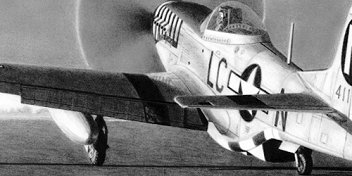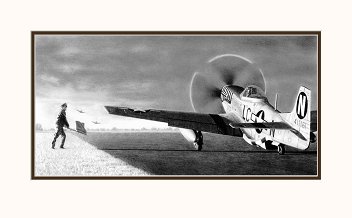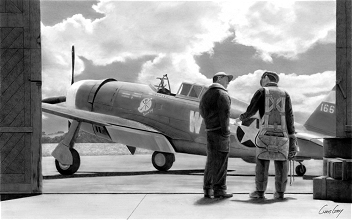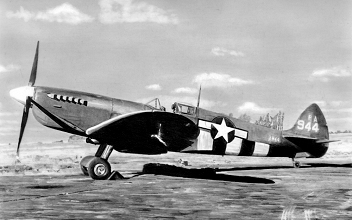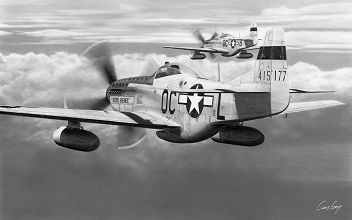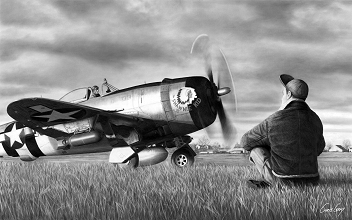|
|
|||
| Lt. Ernest Fiebelkorn | P-51D Mustang | 'June Nite' LC N N |
Original Sold ●
|
| 8th Air Force | 20th Fighter Group | 77th Fighter Squadron |
No Print Edition
|
| Station 367 | RAF Kings Cliffe | October 1944 |
| Artwork Dimensions: | Medium: | Picture Code: | Share: |
| 40cm x 20cm (15.75" x 7.9") | Graphite on Pastelmat | AV022-P-51D-20FG |
|
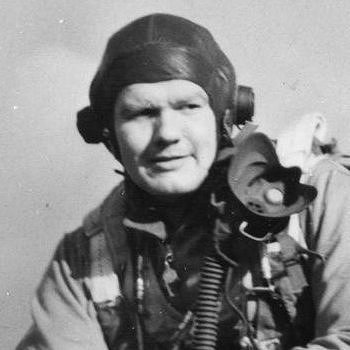
Fiebelkorn's P-51D 44-11161 LC-N 'June Nite' was named after his wife whom he'd married in 1943. By this stage of the war much of the scheme applied to the 20th Fighter Group's aircraft for D-Day was gone leaving the plane in a well-worn and mostly natural aluminium finish with the remnants of the invasion stripes limited to a section under the fuselage. It also wears the unit's distinctive black and white 'piano keys' on the nose and a repeated white identification code letter in a black circle on the tail distinguishing it as one from the 77th Fighter Squadron.
Lt. Fiebelkorn joined the 20th Fighter Group in January 1944 having graduated from flight training the previous August at Williams AAF Base, Arizona. At 6ft 4in, he was one of the Eighth Air Force's biggest pilots and it must have been a squeeze fitting inside the confines of the P-51 cockpit, but it clearly didn't prove much of a hindrance in combat as he finished the war as the 20th Fighter Group's top scoring ace with 11 victories. On 8th November 1944 Fiebelkorn went head to head with one of the Luftwaffe's new fleet of Messerschmitt Me262 jets piloted by Austrian ace Walter Nowotny and claimed his final aerial victory shared with Lt. Edward Haydon from the 357th Fighter Group. At war's end he had reached the rank of Capt. and went on to fly F-82 Twin Mustangs in Korea where he sadly lost his life on a mission in July 1950.


